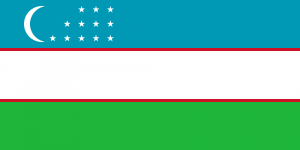Language/Northern-uzbek/Grammar/Nouns
Hi Northern Uzbek learners! 😊
In today's lesson, we will be discussing the basics of Northern Uzbek grammar, focusing on nouns. We will look at the different types of nouns, how to form them, and how to use them in sentences. By the end of this lesson, you should have a good understanding of Northern Uzbek nouns.
Types of Nouns
Nouns are words that refer to people, places, things, or ideas. In Northern Uzbek, there are three main types of nouns: common nouns, proper nouns, and collective nouns.
Common Nouns
Common nouns are general words that refer to people, places, things, or ideas. Examples of common nouns include 'house', 'dog', 'city', and 'happiness'.
Proper Nouns
Proper nouns are specific names that refer to people, places, things, or ideas. Examples of proper nouns include 'John', 'New York City', 'Golden Retriever', and 'Love'.
Collective Nouns
Collective nouns are words that refer to groups of people, places, things, or ideas. Examples of collective nouns include 'family', 'classroom', 'herd', and 'committee'.
Forming Nouns
In Northern Uzbek, nouns can be formed in several ways. The most common way is to add suffixes to verbs or adjectives. For example, the verb 'to write' can be turned into the noun 'writer' by adding the suffix '-er'. Similarly, the adjective 'happy' can be turned into the noun 'happiness' by adding the suffix '-ness'.
Using Nouns
Nouns can be used in many different ways in Northern Uzbek. They can be used as the subject of a sentence, the object of a sentence, or as an indirect object. For example, in the sentence 'John wrote a letter', 'John' is the subject, 'letter' is the object, and 'a' is the indirect object. Nouns can also be used as adjectives or adverbs, as in the sentence 'The happy family went to the beach'. Here, 'happy' is used as an adjective to describe the family.
Conclusion
In this lesson, we discussed the basics of Northern Uzbek grammar, focusing on nouns. We looked at the different types of nouns, how to form them, and how to use them in sentences. Now you should have a good understanding of Northern Uzbek nouns.
If you have any questions, please ask them in the comments section below.
Feel free to edit this wiki page if you think it can be improved. 😎

